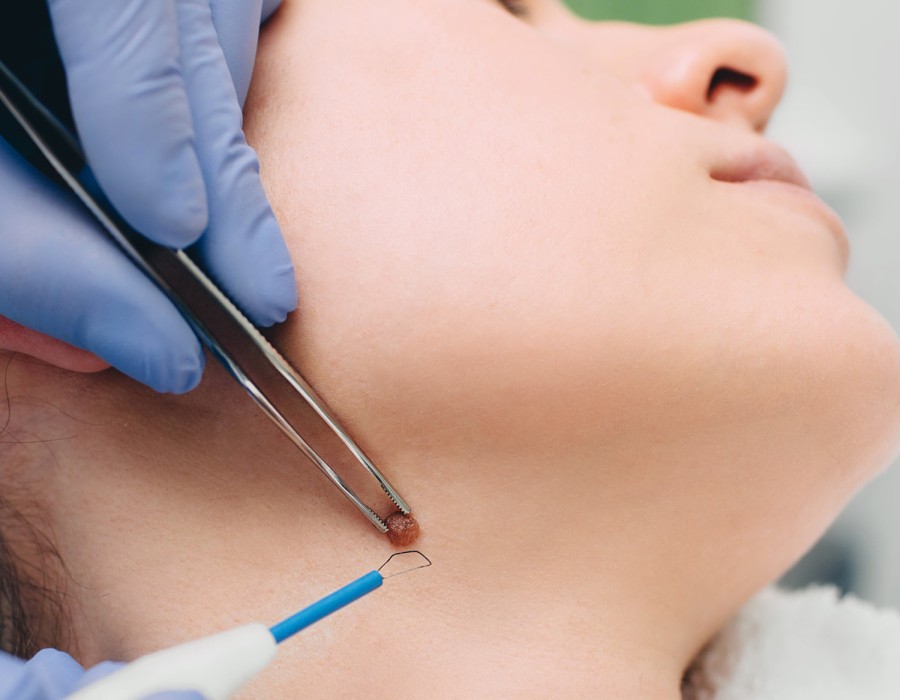Removing a mole can be a common dermatological or cosmetic procedure, but many people often wonder about what to expect during the healing process. Understanding how a healing mole removal site looks can help you recognize normal recovery versus signs of complications. Whether you’ve had a mole removed for medical reasons or cosmetic enhancement, knowing what to expect after mole removal is essential for proper care and peace of mind.
Initial Appearance After Mole Removal
Right after the mole is removed, the area typically looks like a small wound. Depending on the removal method — whether through surgical excision, laser treatment, or shaving — the site may vary in appearance. Usually, you will notice a small open wound or a red, raw-looking spot where the mole once was. This may be covered by a dressing or bandage to protect it from infection.
Within the first few days, it’s normal for the wound to be a little swollen and tender. There may be slight bleeding or oozing initially, but this should stop within a day or two with proper care. Sometimes, small scabs form over the wound, which is part of the natural healing process. You should avoid picking at the scab to prevent scarring.
What to Expect During Healing
As days go by, the wound where the mole was removed gradually starts to heal. Typically, a healing mole removal site goes through several stages:
- Scabbing: A dark scab will form over the wound. This protects the underlying new skin.
- Redness and Pinkness: Underneath the scab, the skin may appear red or pink, which indicates new skin growth and blood vessels forming.
- Itching or Mild Discomfort: Some itching or slight discomfort is common as the skin regenerates.
If you’re curious about professional and safe mole removal options, you can explore services such as mole removal in Islamabad, which ensure the procedure is done with the highest standards and expert care.
How a Healing Mole Removal Site Changes Over Time
About one to two weeks after the procedure, the scab usually starts to fall off naturally. Underneath, you may see a pinkish or lighter skin patch. This new skin might look slightly different in color or texture compared to the surrounding skin but tends to blend over time. The redness may persist for several weeks, but this is a sign of healthy healing and new tissue formation.
In some cases, you might notice mild swelling or a slight bump, especially if stitches were used during the removal. This typically resolves as healing progresses. It is important to keep the area clean and moisturized to support skin regeneration.
Signs of Normal Healing vs. When to Seek Medical Advice
Understanding what a normal healing mole removal site looks like can help you avoid unnecessary worry. However, there are some signs you should watch for that may require medical attention:
- Excessive Redness and Swelling: If the area becomes very red, swollen, and painful after the first few days, it could be a sign of infection.
- Pus or Discharge: Yellow or green discharge is not normal and suggests infection.
- Bleeding That Doesn’t Stop: Minor bleeding is common initially but persistent bleeding needs evaluation.
- Fever or Malaise: These systemic symptoms could indicate an infection that requires treatment.
If you experience any of these symptoms, contact your healthcare provider immediately for advice.
Tips for Proper Care During Healing
To ensure your mole removal site heals smoothly, follow these care tips:
- Keep the area clean and dry.
- Follow your doctor’s instructions on wound care and dressing changes.
- Avoid sun exposure to the healing site, as UV rays can cause hyperpigmentation.
- Do not pick or scratch the scab.
- Use recommended ointments or moisturizers to keep the skin hydrated.
- Attend follow-up appointments to monitor healing progress.
By following these guidelines, you can minimize scarring and promote healthy skin recovery.
Final Thoughts
A healing mole removal site typically looks like a small wound that forms a scab, followed by pink new skin that gradually blends with the surrounding area. The process can take several weeks, and mild redness or itching is normal. However, being aware of warning signs is crucial to prevent complications.
If you are considering mole removal or have recently undergone the procedure, it’s important to choose a reputable clinic with expert dermatologists or surgeons. For those seeking professional mole removal services, mole removal in Islamabad at trusted facilities can ensure safe treatment with proper aftercare guidance.
For expert advice and professional treatment, you can always rely on Royal Cosmetic Surgery PK for comprehensive skin care and cosmetic solutions. Their team of specialists provides personalized treatment plans that ensure your healing process is smooth and satisfactory.
By choosing experienced professionals, you not only get the best treatment but also the reassurance that your skin’s healing journey will be well-managed every step of the way. Visit the Royal Cosmetic Surgery PK to learn more about mole removal and post-treatment care options





Comments